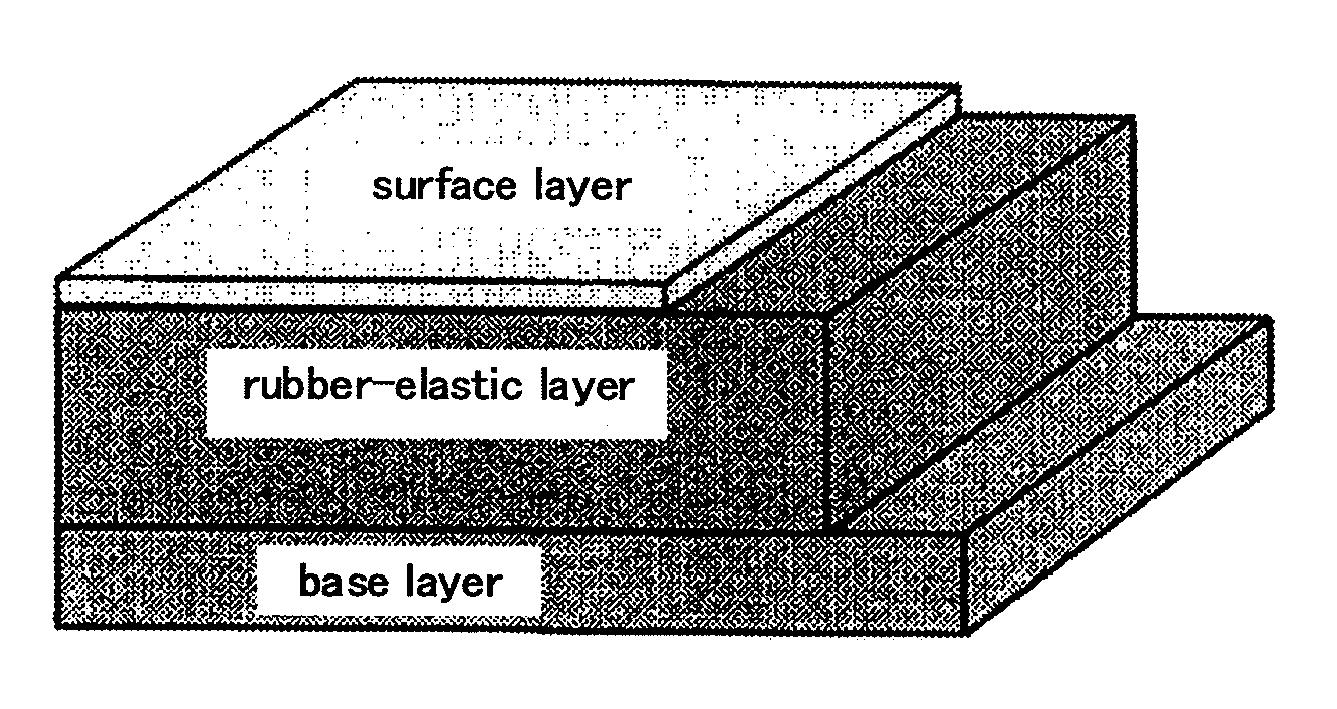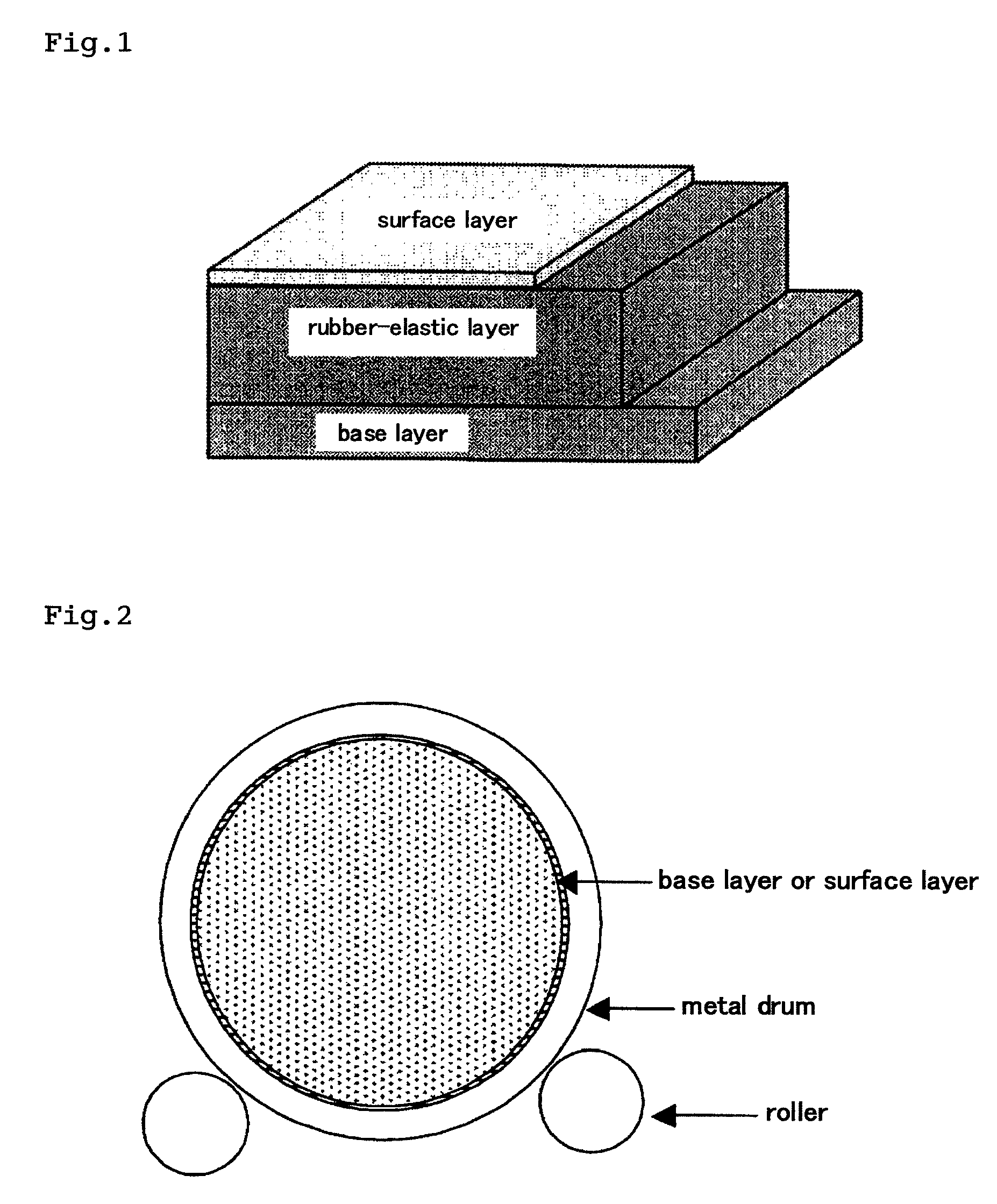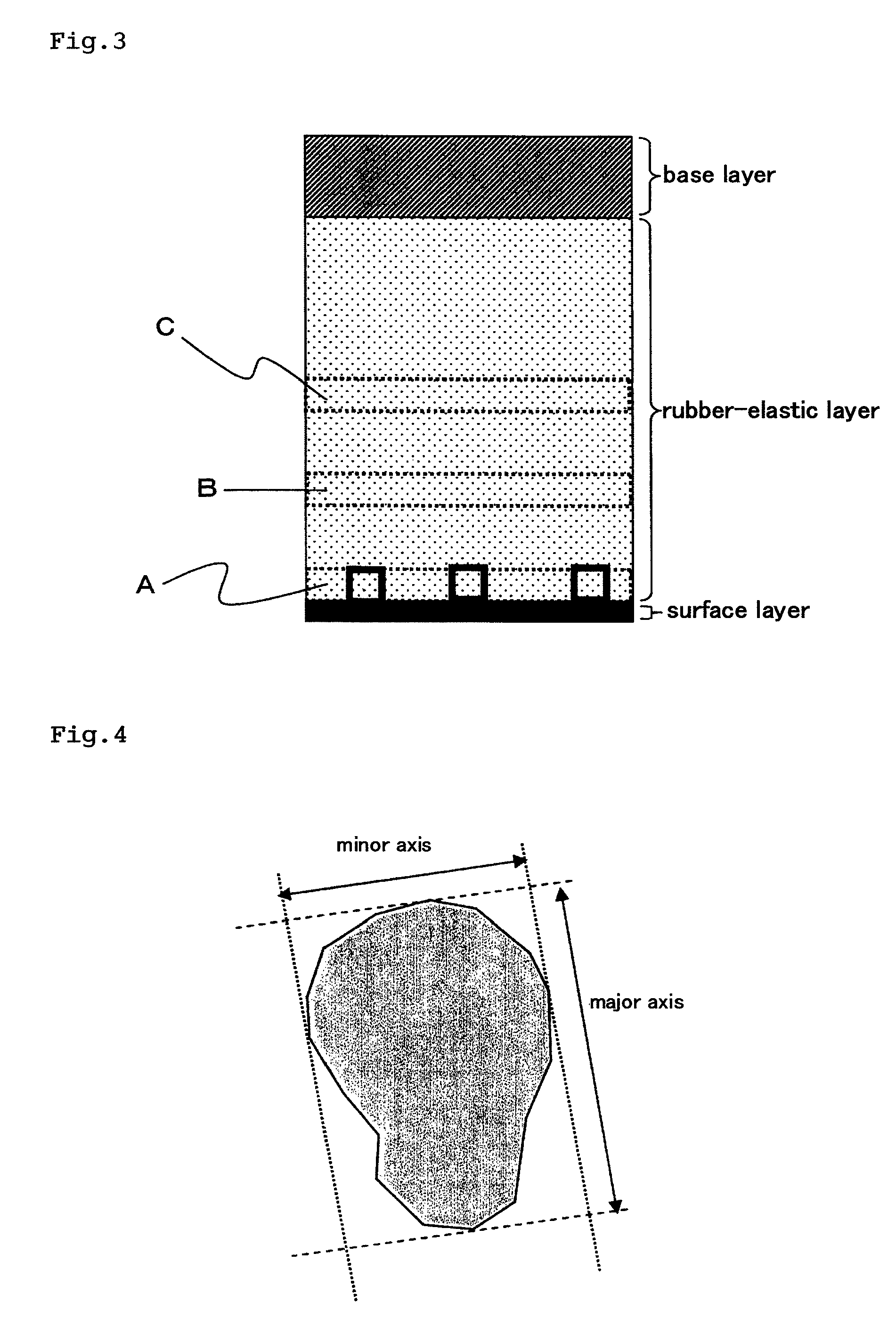Intermediate transfer belt
a transfer belt and intermediate technology, applied in the field of intermediate transfer belts, can solve the problems of reducing image quality, cracking or peeling of the surface layer, and it is extremely difficult for an intermediate transfer belt having a thin surface layer to achieve high external friction resistance, and achieves excellent durability, increased rubber hardness of the rubber-elastic layer, and the effect of preventing the concentration of stress on the surface layer
- Summary
- Abstract
- Description
- Claims
- Application Information
AI Technical Summary
Benefits of technology
Problems solved by technology
Method used
Image
Examples
example 1
(1) Formation of the Base Layer
[0199]Under a nitrogen flow, 47.6 g of 4,4′-diaminodiphenylether (ODA) was added to 488 g of N-methyl-2-pyrrolidone. The mixture was maintained at 50° C. while stirring to achieve complete dissolution. To this solution was added 70 g of 3,3′,4,4′-biphenyl tetracarboxylic dianhydride (BPDA) to yield 605.6 g of a polyamic acid solution. The obtained polyamic acid solution had a number average molecular weight of 19,000, a viscosity of 40 poise, and a solids content of 18.1 wt. %.
[0200]Subsequently, 21 g of acidic carbon black (pH 3.0) and 80 g of N-methyl-2-pyrrolidone were added to 450 g of the polyamic acid solution. Carbon black (CB) was uniformly dispersed using a ball mill. This master batch solution had a solids content of 18.6 wt. %, and a CB concentration of 20.5 wt. % in the solids content.
[0201]Then, 273 g of the solution was collected and poured into a drum. The solution was molded under the following conditions:
[0202]Rotary drum: A metal drum...
example 2
[0222]A multilayered belt was produced in the same manner as in Example 1 except that the amount of aluminum borate incorporated in the rubber layer was 5 wt. % and the volume fraction thereof was 1.96%.
[0223]The obtained multilayered belt had a thickness of 334 μm, an outer circumferential length of 945.0 mm, a static friction coefficient of 0.29, a surface resistivity of 2×1011 to 4×1011Ω / , a volume resistivity of 6×1010 to 9×1010Ω·cm, and a surface roughness (Rz) of 0.7 μm.
[0224]Further, the cross section of the multilayered belt was observed by a scanning electron microscope (SEM), and the mass concentration ratios of aluminum (M1 / M2 and M1 / M3) were determined by EDX. The results showed that M1 / M2=12.5 and M1 / M3=24.8. These results confirmed that the concentration of the filler in the region from the interface between the surface layer and the rubber-elastic layer toward the base layer to a depth of 20 μm was higher than that in the central portion of the rubber layer.
example 3
[0225]A multilayered belt was produced in the same manner as in Example 1 except that the aluminum borate incorporated in the rubber layer was in the form of particles (Alborite, produced by Shikoku Chemicals Corporation, average particle diameter D50=2.6 μm), the amount of aluminum borate was 5 wt. %, and the volume fraction thereof was 1.96%.
[0226]The obtained multilayered belt had a thickness of 337 μm, an outer circumferential length of 945.0 mm, a static friction coefficient of 0.29, a surface resistivity of 2×1011 to 4×1011Ω / , a volume resistivity of 8×1010 to 1×1011Ω·cm, and a surface roughness (Rz) of 0.7 μm.
[0227]Further, the cross section of the multilayered belt was observed by a scanning electron microscope (SEM), and the mass concentration ratios of aluminum (M1 / M2 and M1 / M3) were determined by EDX. The results showed that M1 / M2=11.5 and M1 / M3=13.7. These results confirmed that the concentration of the filler in the region from the interface between the surface layer an...
PUM
 Login to View More
Login to View More Abstract
Description
Claims
Application Information
 Login to View More
Login to View More - R&D
- Intellectual Property
- Life Sciences
- Materials
- Tech Scout
- Unparalleled Data Quality
- Higher Quality Content
- 60% Fewer Hallucinations
Browse by: Latest US Patents, China's latest patents, Technical Efficacy Thesaurus, Application Domain, Technology Topic, Popular Technical Reports.
© 2025 PatSnap. All rights reserved.Legal|Privacy policy|Modern Slavery Act Transparency Statement|Sitemap|About US| Contact US: help@patsnap.com



